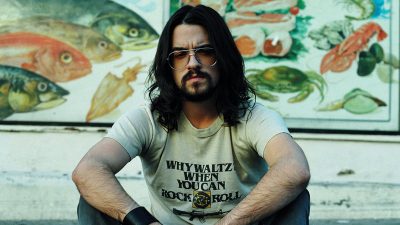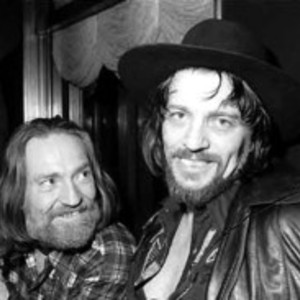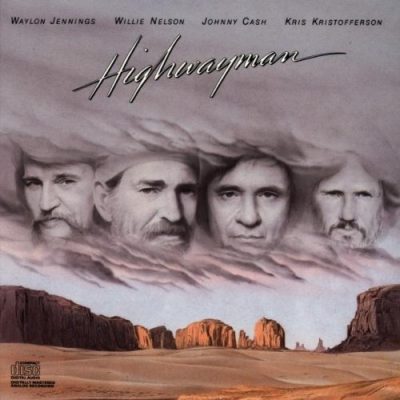Editor's Note
Today we are once again pleased to be posting an entry in Matthew Linton’s excellent series on country music and intellectual history.
Previous posts in this series have been:
- Can a Country Girl Still Survive? Female Country Musicians as Chroniclers of Rural Poverty
- Good Wives, Honky Tonk Angels, and Cuckolded Cowboys: The Feminisms of Kitty Wells, Tammy Wynette, and Nikki Lane
- Countrypolitan Nationalism: Ernest Tubb and Hank Snow’s Audiopolitics of Empire
- The Only One: Charley Pride, Darius Rucker, and the Colorblind Narrative in American Country Music
Matt recently took his doctorate from Brandeis University, and now works as Publications and Communications Manager at the Council of Graduate Schools. His dissertation, Understanding the Mighty Empire: Chinese Area Studies and the Construction of Liberal Consensus, “traces the development of university China studies and its relationship to the New Deal-style liberal politics between 1930 and 1980.” For more information, please visit his website.

Shooter Jennings
In 1995, Dale Watson released his debut album Cheatin’ Heart Attack as a sharp rebuke to the mainstream country establishment. With a slicked back pompadour haircut, denim trucker vest, and songs about honky-tonks and trucking, Watson blended nostalgia with strident traditionalism in critique of pop-country and alt-country hybridity. “Help me Merle/I’m breaking out in a Nashville rash” he crooned on “Nashville Rash” bemoaning country’s alloying with pop and rock, “I’m too country now for country/Just like Johnny Cash.”
Watson was at the head of a traditionalist revival that grew into a full-fledged movement in the 2000s. Artists like Shooter Jennings (son of Waylon Jennings and Jessi Colter) and Jamey Johnson hailed golden age country greats like Cash and George Jones, while lambasting mainstream country as inauthentic. Frequently, these attacks were gendered. Shooter’s “Put the ‘O’ Back in Country” (2005), for example, took a thinly veiled shot at the femininity of male mainstream country music artists as it called for a return to the Outlaw era of Cash, Waylon, and Willie Nelson. Hank Williams III, grandson of Hank Williams and son of Hank Williams Jr., covered Johnny Cash’s murder-romp “Cocaine Blues” while lusting after “Honky Tonk Girls” in his breakout album Raisin’ Outlaw (1999).[1]
The era Watson, Shooter, and Hank III were trying to recapture was the Outlaw Country movement of the 1970s. Yet, like a Russian nesting doll, outlaw country was also performative in trying to recapture country authenticity in the face of a pop country sound and look that marginalized them.
Mainstream country music in the late 1960s was high gloss and easy listening.[2] Stars like Ferlin Husky, Porter Wagoner, and Ray Price were crooners whose heavily produced records were pitched to a middle class, middle aged, white audience who had outgrown country’s postwar rebelliousness. In was also a visual medium. Decades before MTV, The Porter Wagoner Show and Grand Ole Opry broadcast wholesome sketches and country ballads by straitlaced, beautiful stars like Husky and Dolly Parton. During the 1960s, Nashville country was an audio and visual safe harbor for white, southern, middle class respectability where counterculture, rock-and-roll, and the Black Freedom Struggle were noticeably absent.

Find yourself someone who looks at you the way Willie looked at Waylon.
Outlaw developed as an alternative to this high gloss, easy listening country. It was sparse – lyrically and musically – and returned to the rebellious themes of post-war country music. Its stars were sidemen (Waylon Jennings, Willie Nelson, and Kris Kristofferson), has-beens (Johnny Cash and Bobby Bare), and never-weres (Johnny Paycheck, Tompall Glaser, and Jessi Colter).[3] They did not wear nudie suits nor did they have hokey skits. They symbolized a rejection of the comfort and respectability musically embodied in the Nashville Sound. As Waylon Jennings sang in the 1975 hit “Are You Sure Hank Done It This Way?” – “Rhinestone suits and new shiny cars/It’s been the same way for years/We need to change.”
Not only did the Outlaws reject the Nashville Sound, they rejected the city’s control over country music production. Though the term remains contested, one possible origin for the term “outlaw” to describe this alternative sound and spirit came from how the movement’s leaders took back control of musical production from the Nashville establishment.[4] Instead of having musical choices determined by label-controlled producers, artists like Willie Nelson, Bobby Bare, and Johnny Cash recorded albums with their own producers and musicians, even if they had to pay for them out of their own pockets. Often these recordings took place outside Nashville – usually in Austin or Los Angeles – where established country labels had less control. They were thus “outlaws” from the country music industry. Nor was Nashville a source of inspiration for the Outlaws. Texas was the center of their world with California or an amorphous “West” serving as an avenue of escape and freedom.[5]
Despite their rejection of the Nashville Sound’s inauthenticity, Outlaw musicians were themselves hybrids. While they cited Jimmie Rogers and Hank Williams Sr. as their primary influences, rock-and-roll was as important to their sound and presentation. No outlaw figure represented the incorporation of rock elements better than Waylon Jennings. Born in Littlefield, Texas, Jennings first achieved fame as Buddy Holly’s touring bassist before having middling success as a rockabilly and country artist during the 1960s. In 1972, he released Ladies Love Outlaws, which stripped away rock elements in favor of traditional, acoustic country instruments and wild western themes. Ladies Love Outlaws was a success, but in following albums Jennings would stray from his traditional sound back toward more rock-oriented music. A talented guitar player, Jennings preferred an electric Fender Telecaster and an electric twang became his acoustic trademark along with his long beard and black hat.
Outlaws also incorporated elements of the 1960s counterculture. Willie and Waylon were famous for their long, unruly hair. Kris Kristofferson was critical of the Vietnam War and his biggest writing hit, “Me and Bobby McGee,” was immortalized by countercultural icon Janis Joplin. They smoked marijuana and dropped acid. In many ways, Kristofferson saw Outlaw country as a perpetuation of the counterculture’s outsider perspective translated for a rural audience. In his 1971 track, “The Pilgrim Chapter 33,” he tied Outlaw to countercultural film and folk music. Introducing the song by saying he was inspired by figures ranging from Johnny Cash and Jerry Jeff Walker to Ramblin’ Jack Elliott and Dennis Hopper, he presented counterculture and Outlaw as united in their transience. “He’s a walking contraction/Partly truth and partly fiction/Takin’ every wrong direction/On his lonely way back home.” Kristofferson’s film “Convoy” (1978) owed much to this fusion. Drawing deeply from countercultural films like “Easy Rider,” “Convoy” depicted outlaw truckers fighting corrupt law enforcement officers that stifled their freedom of movement while perpetuating racial injustice. For Kristofferson’s protagonist, the outlaw’s yearning for the open frontier and the hippie or student activist’s rejection of social strictures were rooted in the same spirit of independence and freedom of expression.
Though Outlaw began as a critique of the Nashville establishment, it quickly grew into a lucrative industry in its own right. In 1976, Wanted! The Outlaws, a compilation album that featured Waylon Jennings and Willie Nelson went platinum. A string of classic country singles including “Luckenbach, Texas,” “Bloody Mary Morning,” and “Take This Job and Shove It” revitalized country as an art form. Even C.W. McCall’s “Convoy,” a novelty song that inspired Kristofferson’s film, spent six weeks at the top of the country charts and even reached number one on the pop charts.

Ghost Riders in the Sky
The question quickly emerged, however: how could a movement that was defined by its outsider status justify its mainstream success? For some artists, they kept the Outlaw appearance and let their act gradually morph from critique to shtick. Most of the first generation of Outlaws, including Willie, Waylon, Cash, Kristofferson, and Bare took this approach.[6] They embraced the silliness of grown men and women playing cowboy and tacitly admitting that even if their songs were serious artistic statements their image was not. This drift into shtick reached its apogee (or nadir, depending on your audience) with the creation of Outlaw supergroup The Highwaymen. Bringing together Willie, Waylon, Kristofferson, and Cash, The Highwaymen adopted superhuman personas, caricatures of the outlaw figures they once celebrated seriously. Their audience were middle class Americans, the same demographic whose lifestyle they had once criticized. Their concerts were broadcast on public television. The culmination of this satirical turn came in the final verse of their hit song “Highwayman” when Johnny Cash introduces himself as a space outlaw who will “fly a starship/across the universe divide.” The Highwaymen were just big kids playing make-believe, one minute they could be cowboys, train conductors at another, and even astronauts before the end of a two hour set.
Some Outlaws did cling to their authenticity. For these artists like Hank Williams Jr., the Outlaw ethos transformed from a countercultural rejection of authority to a recrudescent conservatism that contrasted the purity and freedom of simple country life to urban corruption and control. In “Family Tradition,” Hank Jr. had claimed his father’s mantle as a heavy drinking, rabble rouser who was “living out the songs” that he wrote. As discussed in a previous post, “A Country Boy Can Survive” saw Hank Jr. pivoting to a darker image of the outlaw lifestyle as a necessary retreat into rural life as a result of urban decay and violence. Though the song was intended as a celebration of country resilience, its depiction of the murder of an affluent businessman at the hands (and switchblade) of a petty criminal could be easily heard as a racist dogwhistle painting urban spaces as black, poor, and dangerous.
“A Country Boy Can Survive” was only the beginning of Hank’s conservative turn, however. In 1988, he released “If the South Woulda Won;” a reactionary fever dream depicting a utopian Southern world where the Confederates won the American Civil War. “If the South woulda won/we’d a had it made,” Hank opens casting little doubt who he really intended the “we” to be, before a fiddle playing “Dixie” hits in the refrain. The song goes on to celebrate capital punishment, call for a re-conquest of Miami, ban all vehicles imported from China (I assume he meant Japan, but that’s really the least of the problems here), and send every girl to Georgia “to learn to smile and talk with that southern accent that drives me wild.” The song is a distillation of white male resentment during the Reagan 80s, hitting all the core themes from racism and capital punishment to antifeminism and xenophobia.[7]
Moreover, Hank Jr. has continued living out the songs. He has been a consistent and politically active supporter of the Republican Party since the early 2000s, recording songs championing the presidential candidacies of George W. Bush and John McCain. In a 2011 appearance on Fox and Friends, he compared President Barack Obama to Adolf Hitler compelling ESPN to drop him as the opening theme for Monday Night Football. That same year he recorded “Keep the Change” a diss-track where he insults Obama, Fox and Friends, and ESPN with the chorus “This country’s going down the drain/We know what we need/We know who to blame/United Socialist States of America/How do you like that name?/I’ll keep the USA and y’all can keep the change.” As one Rolling Stone article has noted, this political posture has not hurt Hank’s career: “none of this has diminished Williams’ ability to play arena-sized venues in the slightest.”[8]
It’s tempting to view Hank Jr.’s reactionary turn as an outlier to the Outlaw tradition, but it could be seen as the culmination of its philosophy. Early Outlaw was about escape; running from something. But what were they running from? Seen through the lens of its 1960s countercultural influences it was cultural conformity and the homogeneity of nuclear families and white picket fences that defined mid-century white middle class liberalism. There were other fears that motivated Outlaws like Hank Jr., however. The specters that haunted his music were desegregation, economic equality implemented through government-run social programs, women’s equality, and diversity. If The Highwaymen ultimately showed that the claims of Outlaw authenticity were all an act, then Hank Jr.’s music argued that freedom was under assault and that Outlaws needed to stand their ground and change society, instead of escaping from it.
Notes
[1] Unlike Dale, however, Shooter and Hank III’s visions of traditional country were clearly influenced by hard rock music. This has been borne out by their development as artists since the early 2000s. Shooter has moved towards a more classic rock sound with a stage craft reminiscent of 1980s hair metal. Hank, by contrast, has pivoted to a hybrid country/metal sound. The best way to describe it is as the audio accompaniment to contemporary motorcycle culture, which blends classic rock, heavy metal, punk, and country themes to celebrate freedom, lawlessness, and violence.
[2] For those interested in how and why country went pop, Joli Jensen wrote an excellent history describing how the Nashville Sound was created in the late 1950s. Joli Jensen, The Nashville Sound: Authenticity, Commercialization, and Country Music (Nashville: Vanderbilt University Press, 1998).
[3] Two big country stars, Merle Haggard and George Jones, became honorary outlaws over time though they were not part of the original movement.
[4] Stephen M. Deusner, “What Exactly Makes a Country Outlaw?” Pitchfork (June 5, 2018): https://pitchfork.com/thepitch/what-exactly-makes-a-country-outlaw/.
[5] Though there is no evidence of cross-pollination, the spirits of Bruce Springsteen and the Outlaws are remarkably similar. Both saw American decline (the real “darkness of the edge of town”) and dreamed of breaking free. Unlike 1960s escapism, however, which stressed spiritual liberation and found it in psychedelic drugs, Springsteen and the Outlaws preached physical escape and found it on the open road.
[6] Perhaps the funniest and most self-aware song of the late Outlaw period was David Allan Coe’s “You Never Even Called Me by My Name,” which closes with Coe telling a story of a conversation between himself and Chicago folksinger Steve Goodman about the perfect country song. Coe argues that “You Never Even Called Me by My Name” was the perfect country song. Goodman disagrees. He says it can’t be the perfect country song because it doesn’t mention mama, trains, prison, rain, a pickup truck, or getting drunk. In response, Coe composes a final verse incorporating all six themes, thus creating the perfect country song.
[7] Jefferson Cowie’s Stayin’ Alive, a landmark cultural history of deindustrialization’s impact on working class America, traces a similar expression of white resentment in Merle Haggard’s “Okie from Muskogee.” For Cowie, the white working class’s embrace of Haggard’s peon to middle class respectability demonstrated their rejection of the counterculture and its message of egalitarian inclusivity. Though conservatives embraced “Okie,” as Tyler Mahan Coe argues in his Cocaine and Rhinestones podcast episode on Merle Haggard, it was clearly at least partly satirical since Haggard was a marijuana user and former criminal who scoffed at middle class, small-town respectability. Jefferson Cowie, Stayin’ Alive: The 1970s and the Last Days of the Working Class (New York City: The New Press, 2012); and, Tyler Mahan Coe, “Breaking Down Merle Haggard’s Okie from Muskogee,” (November 21, 2016): http://cocaineandrhinestones.com/merle-haggard-okie-from-muskogee.
[8] Jon Freeman, “Hank Williams Jr. and Charlie Daniels: Inside Their Defiant Politics,” Rolling Stone (June 23, 2017): https://www.rollingstone.com/country/news/hank-williams-jr-charlie-daniels-conservative-politics-w488739. Daniels’ career has largely mirrored Hank Jr.’s, though he has had fewer high-profile political incidents. The best thing Freeman could say about his politics is “mercifully, he’s not a Holocaust denier,” which is pretty much all you need to know.

3 Thoughts on this Post
S-USIH Comment Policy
We ask that those who participate in the discussions generated in the Comments section do so with the same decorum as they would in any other academic setting or context. Since the USIH bloggers write under our real names, we would prefer that our commenters also identify themselves by their real name. As our primary goal is to stimulate and engage in fruitful and productive discussion, ad hominem attacks (personal or professional), unnecessary insults, and/or mean-spiritedness have no place in the USIH Blog’s Comments section. Therefore, we reserve the right to remove any comments that contain any of the above and/or are not intended to further the discussion of the topic of the post. We welcome suggestions for corrections to any of our posts. As the official blog of the Society of US Intellectual History, we hope to foster a diverse community of scholars and readers who engage with one another in discussions of US intellectual history, broadly understood.
As a diehard country music fan, thank you for the series. It’s been great!
Billy Joe Shaver might be a more complicated version of the outlaw story, as someone who moved on the periphery of that group (and wrote several of the songs that Kristofferson and Jennings made hits) and has made both conservative and fairly progressive statements in and outside of his music.
https://www.texasmonthly.com/articles/the-trials-of-billy-joe-shaver/
Lyric for The Pilgrim should be “contradiction” and not “contraction.”
Love this series. It’s helping me understand a broad swath of my family—a swath with which I’ve had troubled relations. (I had an aunt and uncle who were the main members of a cover band that played Waylon Jennings songs.) Those troubles, and the mixed emotions attached to them, prevent me from having a clear picture of what the Outlaw Country scene was all about. That said, it’s always been clear to me that they were as attached to the counterculture impulse they often despised. The key theme was the rejection of authority. They wanted independence and freedom even while they wanted the structure, and discipline, of “family.” …Okay. I’ll stop now. I’m feeling that TMI feeling. – TL